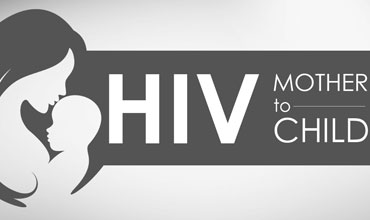Impact of Repeated Prevention of Mother to Child Transmission of HIV (PMTCT) Services on Vertical Transmission of HIV Infection in Southwest Nigeria

Abstract:
Background: In Nigeria about 50,000 children are infected with HIV annually, mostly
through mother to child transmission, thus making her the greatest contributor
(30%) to the global paediatric HIV burden. Since the inception of the PMTCT
programme in Nigeria in 2001, the number of HIV+ pregnant women that had
accessed the service was more than 200,000. Some accessing the service more
than one time during different pregnancies.
Objectives: The study was conducted primarily to
determine, if there was any, the impact of maternal exposure to repeated PMTCT
care on the rate of mother to child transmission of HIV infection. Other
secondary objectives included calculating the proportion of PMTCT clients who
are accessing the PMTCT service for the first time, the 2nd, 3rd or 4th time
Methods: This was a
retrospective case-control multicenter study. PMTCT clients who have had repeated PMTCT
services form the case while the control group consisted of first-timers PMTCT
clients.
Results: The control group
consists of 387 HIV positive nursing mothers who were assessing the PMTCT
service for the first time while the case group consisted 116 who were repeated
users of the PMTCT service. Of the repeated PMTCT clients (case group), 95% (n=110)
were accessing the PMTCT service for the 2nd time while 5%(n=6)were
third time users of the PMTCT service. None had used the service for more than
3rd time. HIV vertical transmission rate was 0% among babies of
mothers who were having repeated PMTCT service(case group) while only 1.4%
babies whose mothers were receiving PMTCT service for the first time(control)
were vertically infected.
Conclusion: Though the vertical transmission of HIV was slightly higher among babies
whose mothers were exposed to the PMTCT service for the first time. The
difference in the transmission rates between the two groups was not
statistically significant P>0.05,
X2 = 1.309, df=1) and there was no statistical association between
the number of vertically HIV infected infants and the number of time the
mother was exposed to PMTCT services.
Keywords: HIV (human
immunodeficiency virus), Prevention of Mother To child Transmission of HIV (PMTCT),
ARV (antiretroviral drugs), PCR (polymerase chain reaction), Seroconversion, HAART.
References:
[1]. A.S. Sagay, et al.
Vertical transmission of HIV-1 infection in northern Nigeria. : AIDS 2006 - XVI
International AIDS Conference: Abstract no. TUPE0345
[2] A review of HIV
transmission through breastfeeding. Geneva: UNAIDS and WHO; 1998.
[3] Burgos-Soto J et al.
Intimate partner sexual and physical violence among women in Togo, West Africa:
prevalence, associated factors, and the specific role of HIV infection. Global
Health Action. 2014; 7. doi: 10.3402/gha.v7.23456
[4] DITRAME STUDY GROUP. 6 month efficacy, tolerance and acceptability of a
short regime of oral zidovudine to reduce vertical transmission of HIV in
breastfed children in coted`Ivoire and Burkina Faso: a double –blind
placebo-controlled metacentre trial. Lancet, 1999, 353(9155):786-792.
[5] Fitzpatrick, Fidelma,
et al. "Use of a fourth generation HIV assay for routine screening–The
first years’ experience." Journal of Infection 53.6 (2006): 415-416.
[6] Global AIDS Response
Country Progress Report, Nigeria GARPR 2012
[7] Global Aids Response
Country Progress Report, Nigeria GARPR 2015, National Agency for the Control of AIDS
(NACA), Abuja, Nigeria
[8] Homsy J et al.
Reproductive intentions and outcomes among women on antiretroviral therapy in rural
Uganda: a prospective cohort study. PloS ONE. 2009; 4(1). doi: 10.1371/journal.
pone.0004149
[9] Myer L et al. Impact
of antiretroviral therapy on incidence of pregnancy among HIV-infected women in
Sub- Saharan Africa: a cohort study. PLoS Medicine. 2010; 7.2: 194.
[10] Nigerian Integrated
National Guidelines For HIV Prevention, Treatment And Care 2014
[11] Nigeria National
Guidelines on Prevention of Mother-To-Child Transmission (PMTCT) of HIV, 2010
[12] Nigerian National
guideline for HIV Counselling and Testing 2012 pg 35.
[13] Nigerian National
Operational Plan for the Elimination of Mother to Child Transmission (eMTCT) of
HIV in Nigeria 2015–2016, Federal Ministry of Health, Abuja, Nigeria.
[14] PETRA STUDY TEAM. Efficacy of three short-course regimens of zidovudine
and lamivudine in preventing early and late transmission of HIV-1 from mother
to child in Tanzania, South Africa, and Uganda(Petral study): a randomised,
double-blind, placebo-controlled trial. Lancet, 2002, 359(9313):1178-1186
[15] Tonwe-Gold et al. Highly active antiretroviral therapy for the prevention
of perinatal HIV transmission in Africa: mother-child-transmission HIV plus,
Abidjan, Cote d’Ivoire, 2003-2004. 12th Conference on Retroviruses
and Opportunistic Infections, Boston, MA US, 22-25 Feb. 2005 (Abstract 785).
[16] The worldwide
incidence of preterm birth: a systematic review of maternal mortality and
morbidity http://www.who.int/bulletin/volumes/88/1/08-062554-table-T3.html
[17] UNAIDS 2014 report
[18] UNAIDS 2014 estimates
[19] West and Central Africa Regional Stocktaking Meeting on the Global
Plan for the Elimination of Mother-to-Child Transmission of HIV and Keeping
Mothers Alive by 2015: The Last 600 Days: Challenges, Opportunities and the Way
Forward.
[20] WHO validates
elimination of mother-to-child transmission of HIV and syphilis in Cuba Http://www.who.int/mediacentre/news/releases/2015/mtct-hiv-cuba/en/?
[21] 2015 Progress report
on the Global Plan UNAIDS / JC 2774/1/E

